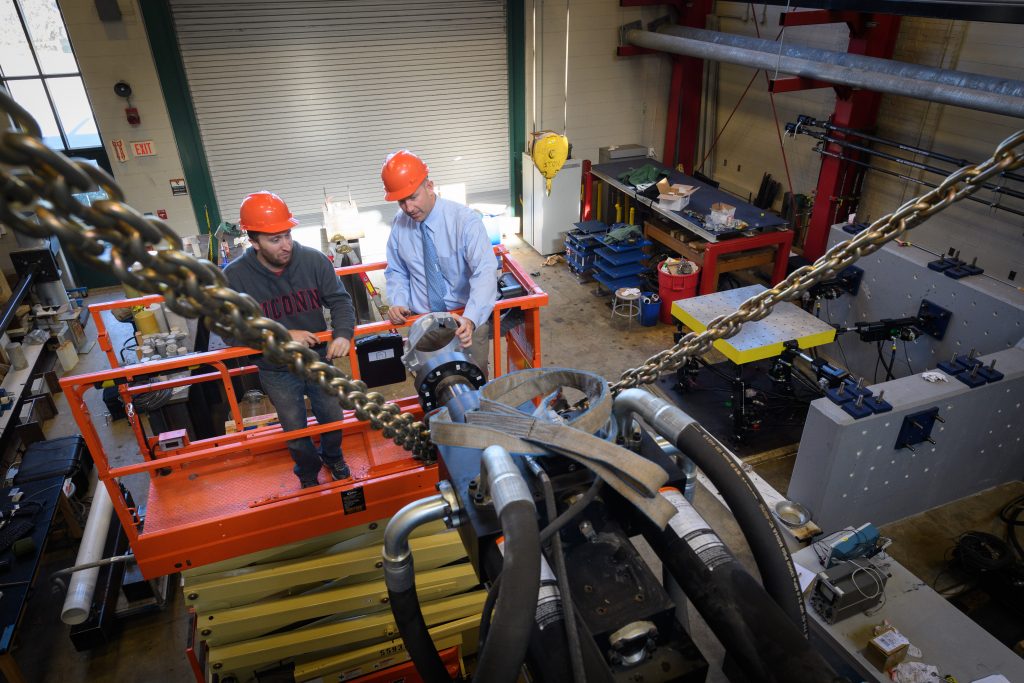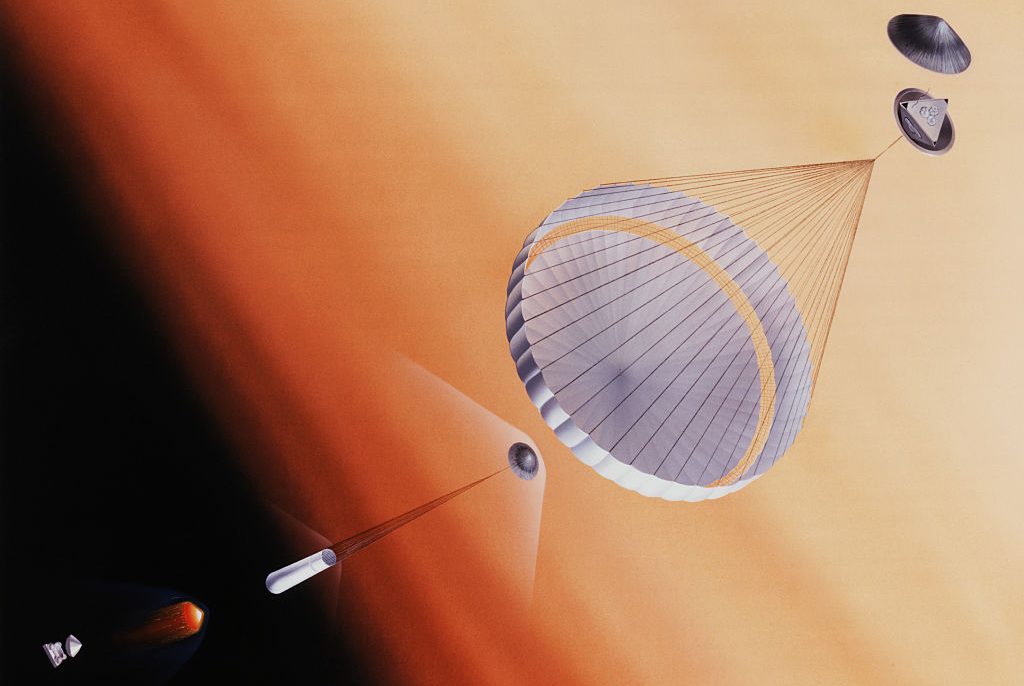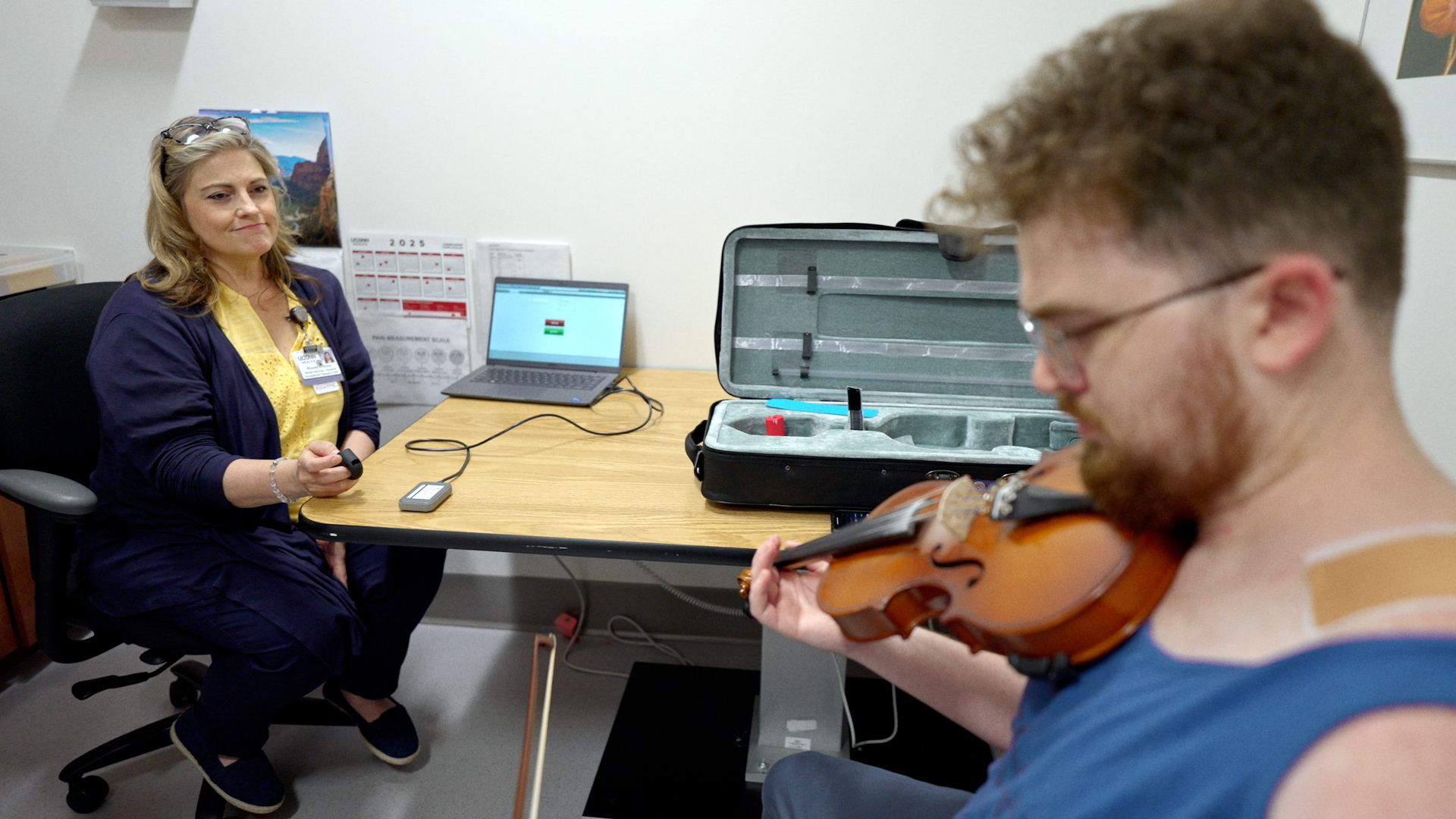UConn researchers are adapting methods for studying forces in earthly structures for use in spacecraft.
Civil and environmental engineering professor Richard Christenson and his research group, in partnership with Pioneer Aerospace, are using a cyber-physical test method to study the reaction forces involved in launching the parachutes that help spacecrafts land on distant planets. They hope their expertise, hard work, and careful calculations will lead to safer and more efficient missions into space.

Christenson’s group typically studies movement in terrestrial structures, such as bridges and skyscrapers, so it may seem surprising to find a piece of the Mars Pathfinder in his lab. But the same math that’s involved in vibrations within a structure on earth apply to those within a spacecraft.
“We’ve developed very specific techniques here at UConn,” says Christenson. “We have the right equipment, the right computers, and the knowledge to carry out this type of project.”
Simply landing safely on a planet after many months of travel through space involves a lot of potentially jarring forces. In the case of a rover such as the Pathfinder, when the spacecraft has reached its destination planet, it must enter the atmosphere and land safely. Parachutes slow the rover’s descent, and also orient the craft so the heat shield is positioned properly.
The parachute deceleration subsystem, as it is formally known, deploys by using a mortar that creates a controlled explosion and shoots the parachute out behind the spacecraft. However, the force that launches the parachute is also exerted on the spacecraft itself, and the resulting reaction of the spacecraft may change the profile of the force being produced.
This process introduces an element of uncertainty because the force has the potential to knock something within the spacecraft loose, say a control panel or other delicate instrumentation. And, if something vital becomes loose, that could mean the end of the mission.
In an effort to eliminate some of the many “what ifs” involved in space travel, the UConn group teamed up with Pioneer Aerospace to test the parachute system.
“As far as we know, this is the first real-time hybrid simulation taking place with spacecraft,” says Christenson.
In the past, these parachute systems have been tested while mounted to fixed, unmovable objects. The mortar would be fired and measurements taken. What Christenson and Ph.D. student Michael Harris are doing is more dynamic. The mortar will be fixed to a huge piece of equipment called a hydraulic actuator that is capable of very precise, high-speed movements that mimic the spacecraft. As the reaction force is measured from the parachute mortar, the actuator represents the flexibility that’s present in the spacecraft hull.
“We can tell the actuator to move as if it was the spacecraft,” says Harris. “Based on certain force inputs, the actuator will move so much, and we will measure what happens in response.”
The mortar blasts will be quick, lasting just 30 milliseconds. The researchers plan to make four highly controlled shots. For each one, measurements will be taken and applied to a computer model of the spacecraft, so that position adjustments can be made as the mortar is fired. The energy of the blast has to go somewhere within the spacecraft, and the model will reveal that information, so the researchers can determine the forces imparted on specific points all over the spacecraft resulting from deployment of the parachute.
Another valuable application for this model involves the weight of the spacecraft. Once the reaction forces can be accurately calculated in the model, the researchers may be able to pinpoint areas of over-design. Efficiency in weight can mean fuel savings and more room for equipment and experiments on board.
Before any of this can happen, the huge actuator must be mounted onto a load frame composed of large steel girders stretching several feet overhead using a large crane inside the lab. The load frame girders are studded with bolts, each with a smattering of orange goo that indicates they have been tightened to the proper tension — all 120 of them. Opposite the load frame, the crane will suspend a massive steel plate, so that nothing is shot out of the room at the time of the blast.
If all goes to plan, this set-up will be a proof of concept demonstrating that a laboratory test of this kind can be applied to shock cases in aerospace engineering. In the future, similar technology may be applied to newer spacecraft designs.
The project is an exciting one for the group. After all, how many people can say they’ve held an object that came close to being shot into space?
“This was so close to going to Mars, they only make a few,” says Christenson, as he examines the hefty metal component of the Mars Pathfinder parachute system. “I wonder why they didn’t choose this one?”



